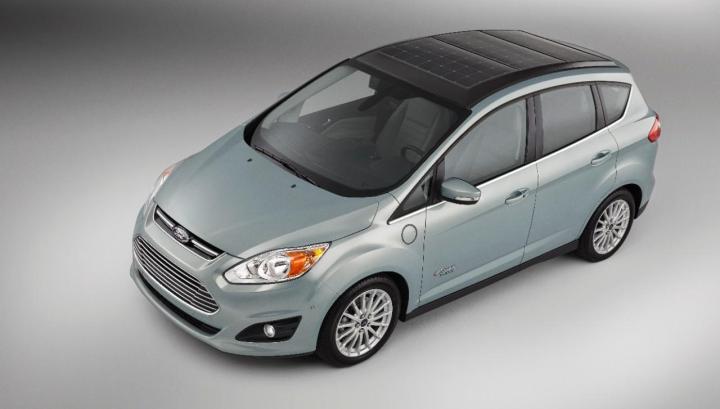
Ford is letting the sun shine in with its latest green concept.
The Ford C-Max Solar Energi is exactly what it sounds like: a version of the Blue Oval’s plug-in hybrid hatchback with added solar power.
Set to debut at the 2014 Consumer Electronics Show next week, the C-Max Solar Energi takes the “plug” out of “plug-in hybrid” by allowing drivers to use sunlight to charge its batteries.
To do that, Ford covered the car’s roof in solar cells, and employed a special concentrator to focus more of the sun’s rays onto them. It’s actually a Fresnel lens, like the ones used in lighthouses.
Ford says a day’s worth of sunlight delivers equivalent performance to a C-Max Energi charged with grid electricity. That presumably means drivers will have to leave their cars in the sun all day to get a full charge.
Other than the solar roof, the sun-bathing concept is identical to a regular C-Max Energi. That means it has a 2.0-liter Atkinson-cycle four-cylinder gasoline engine and CVT paired with an electric motor and lithium-ion battery pack.
The C-Max Energi is rated at 100 MPGe combined by the EPA. While the non-plug-in C-Max Hybrid was at the center of a scandal regarding inflated mpg estimates, the Energi has escaped similar criticism.
Ford isn’t the first carmaker to put a solar panel on the roof of one of its vehicles – Nissan, Toyota, and Fisker, for example, have offered solar panels as a supplementary source of electricity to power accessories – but the C-Max Solar Energi’s use of solar power to charge its battery pack is fairly novel.
According to Ford, the main benefit of solar power is that it allows hybrid owners to go “off the grid” and not have to worry about plugging in. So a solar roof could be pretty helpful to drivers looking to minimize fuel consumption if it ever makes it into production.


